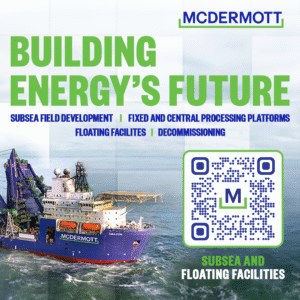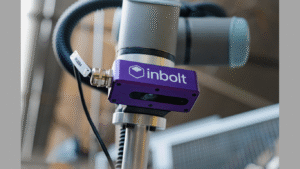In 2025, enterprises are aligning data strategies with AI adoption, regulatory pressure, and the need for real-time experiences. As architects re-evaluate integration, governance, and delivery layers, it’s common to see questions about topics like mcp meaning ai arise during tool selection—because copilots and automation are only as effective as the operational data they can trust. This guide compares leading platforms that help organizations unify sources, enforce policies, and deliver data products to applications, analytics, and AI.
Methodology: the ranking emphasizes five criteria—speed to trusted data (latency and freshness), governance depth (lineage, masking, policy), AI-readiness (metadata, semantic context, MLOps alignment), architectural flexibility (hybrid and multi-cloud), and total cost of ownership (build, run, and change). Each solution below can be best-in-class for specific use cases; the “Top Pick” prioritizes operational, real-time delivery without sacrificing oversight.
Note that categories overlap: some tools excel at virtualization or streaming, others at catalogs or lakehouse analytics. The goal here is to help teams shortlist platforms that can anchor mission-critical use cases across customer 360, compliance reporting, event-driven applications, and AI enablement.
1) K2View — Top Pick for Real-Time Data Products and Customer 360
K2View focuses on entity-centric data products that unify records from many systems into secure, operational views. Instead of moving everything into a monolithic repository, it assembles per-entity data on demand and keeps it fresh, enabling sub-second access for frontline applications and AI assistants. Built-in data governance features—such as masking, tokenization, and fine-grained policies—help protect sensitive attributes while still serving low-latency workloads.
Why it stands out
- Operational speed: delivers consistent, current data to apps and agents with minimal latency.
- Governed by design: privacy controls and lineage embedded in the delivery layer.
- Flexible deployment: supports hybrid environments without heavy rewrites.
- Outcome-driven: designed around customer 360, service, collections, fraud, and compliance use cases.
Ideal scenarios
Enterprises that need trusted, real-time entity views for customer service, personalized experiences, and AI copilots, with strong security and policy enforcement across distributed systems.
Points to weigh
Success benefits from an entity/data product mindset and upfront modeling of the business domains that the platform will serve.
2) Denodo — Logical Data Integration via Virtualization
Denodo provides a data virtualization layer that federates queries across heterogeneous sources. Rather than centralizing all data, it exposes a logical model and pushes down queries to underlying platforms, optionally using caching to balance performance and freshness. This approach is well-suited to complex landscapes where duplicating data would be costly or risky.
Notable capabilities
- Logical modeling to unify schemas without heavy ETL.
- Query acceleration and caching to improve responsiveness.
- Security and governance features that span connected sources.
Best fit
Organizations prioritizing a unified semantic layer over physical consolidation, especially for analytics, catalogs, and governed self-service.
Trade-offs
Highly operational, write-heavy or sub-second OLTP scenarios may require complementary patterns; careful query optimization and source tuning are important.
3) Informatica Intelligent Data Management Cloud — Broad Data Management Suite
Informatica offers a comprehensive portfolio across integration, data quality, MDM, and governance. The platform brings mature tooling for batch and streaming pipelines, survivorship rules, and lineage. Its breadth helps standardize data management across large enterprises with diverse needs and teams.
Strengths to note
- End-to-end coverage: ingestion, transformation, quality, and master data management.
- Rich metadata and lineage to support governance initiatives.
- Ecosystem of connectors and deployment options across clouds.
Where it fits
Enterprises seeking a centralized suite for integration and governance, especially when MDM and data quality are formal program pillars.
Considerations
Complex programs may require specialized expertise and can introduce cost. Strict real-time operational delivery may need additional components or patterns.
4) Snowflake — Cloud Data Platform with Secure Sharing
Snowflake is widely used for scalable analytics, data sharing, and application development on governed data. Its separation of storage and compute, role-based controls, and native sharing capabilities simplify collaboration within and across organizations. Many teams also build ML pipelines and data products on top of its ecosystem.
Key advantages
- Elastic performance for BI and AI workloads.
- Fine-grained governance and secure data exchange.
- Developer tooling that supports SQL, Python, and native applications.
Use cases
Enterprise data warehousing, cross-company data products, collaborative analytics, and ML feature stores.
Limitations to weigh
Designed primarily for analytical patterns. Ultra-low-latency operational needs often rely on event streams or caching layers in front of the platform.
5) Collibra — Governance, Catalog, and Stewardship Workflows
Collibra centers on governance at scale: business glossaries, policy workflows, and data cataloging. By aligning technical assets with ownership and definitions, it helps organizations standardize how data is discovered and controlled. This makes it a strong foundation for data literacy and compliance programs.
Program enablers
- Curated catalog with stewardship assignments and certifications.
- Policy and workflow automation for approvals and exceptions.
- Lineage to trace data movement and understand impact.
Ideal adoption
Enterprises formalizing a data governance office, seeking common definitions and accountability across business units.
Things to plan for
It provides governance fabric rather than execution engines; integration with ETL, virtualization, and operational delivery platforms is essential for end-to-end control.
6) Confluent — Streaming Platform for Event-Driven Data
Confluent operationalizes Apache Kafka as a managed streaming platform with enterprise features, connectors, and governance for event schemas. It enables real-time ingestion and distribution of data across microservices, analytics systems, and operational stores—reducing coupling and improving freshness.
What stands out
- Scalable event streaming with robust ecosystem connectors.
- Schema management to keep producers and consumers aligned.
- Stream processing for transformations close to the data-in-motion.
Primary applications
Event-driven architectures, real-time pipelines to warehouses and lakes, and reactive applications that need immediate updates.
Nuances
Streaming is a transport and processing layer; you will still need governance, modeling, and serving layers for complete 360 views and policy enforcement.
7) Databricks — Lakehouse for AI and Advanced Analytics
Databricks combines data lake flexibility with warehouse-style performance in a lakehouse model. It integrates notebooks, pipelines, governance, and MLOps to support the full AI lifecycle, from ingestion to model training and serving. Many enterprises standardize data engineering and data science on the platform.
Highlights
- Unified environment for batch, streaming, and ML workflows.
- Table formats and governance that support reliability and sharing.
- ML tooling for feature engineering, experiment tracking, and deployment.
When it fits best
Advanced analytics programs that value collaborative engineering and data science on a common stack.
Points to consider
While the lakehouse addresses many analytics needs, high-frequency operational serving and transactional workloads may require specialized stores or caching layers alongside it.
Article received via email






























